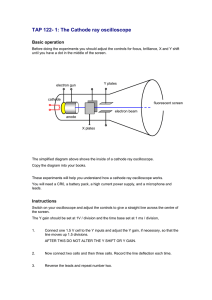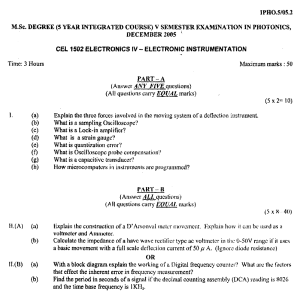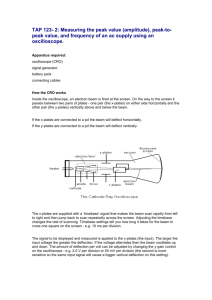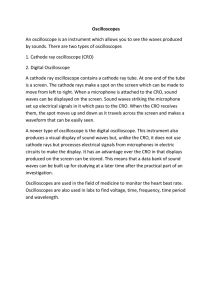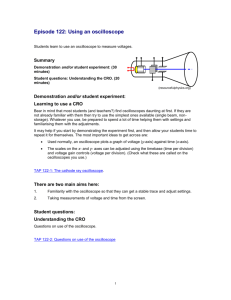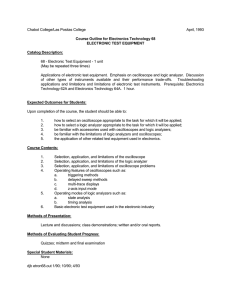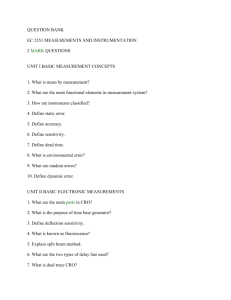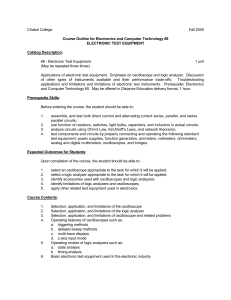Episode 122-2: Questions on use of the oscilloscope (Word, 26 KB)
advertisement
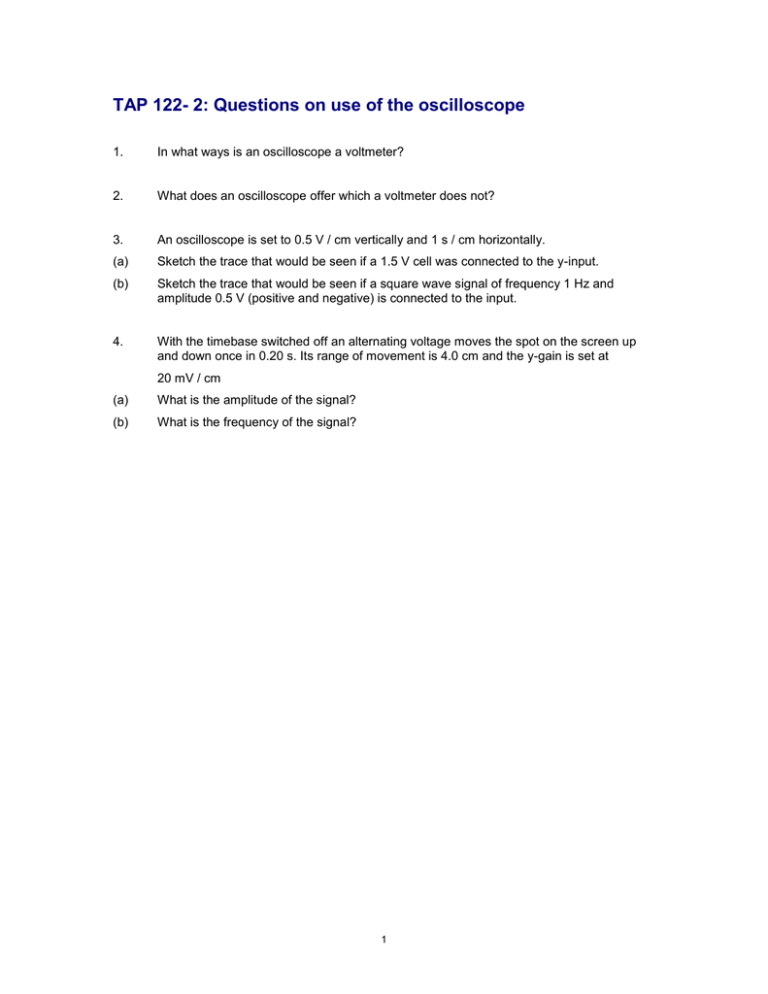
TAP 122- 2: Questions on use of the oscilloscope 1. In what ways is an oscilloscope a voltmeter? 2. What does an oscilloscope offer which a voltmeter does not? 3. An oscilloscope is set to 0.5 V / cm vertically and 1 s / cm horizontally. (a) Sketch the trace that would be seen if a 1.5 V cell was connected to the y-input. (b) Sketch the trace that would be seen if a square wave signal of frequency 1 Hz and amplitude 0.5 V (positive and negative) is connected to the input. 4. With the timebase switched off an alternating voltage moves the spot on the screen up and down once in 0.20 s. Its range of movement is 4.0 cm and the y-gain is set at 20 mV / cm (a) What is the amplitude of the signal? (b) What is the frequency of the signal? 1 Answers and worked solutions 1 For an oscilloscope deflection is proportional to potential difference, and the CRO has high resistance, so it has all the properties of an ideal voltmeter. Unlike most voltmeters, many commercial CROs have one side of each input is earthed. This does not normally matter, but if the CRO is being used with an earthed supply, care must be taken to connect the earthed CRO input to the earthed side of the supply. 2 Can display variation of potential difference with time, giving a graphical display. It can do this even with very rapid variations. With many oscilloscopes two signals can be displayed at the same time, on separate voltage against time graphs. Often the two signals can be plotted against each, as an “X-Y” plot. 4 20 mV cm-1 x 4 cm = 80 mV. Amplitude is half this so 40 mV. Time for one oscillation is 0.2 s so f= 1 / 0.2 s = 5 Hz 2
